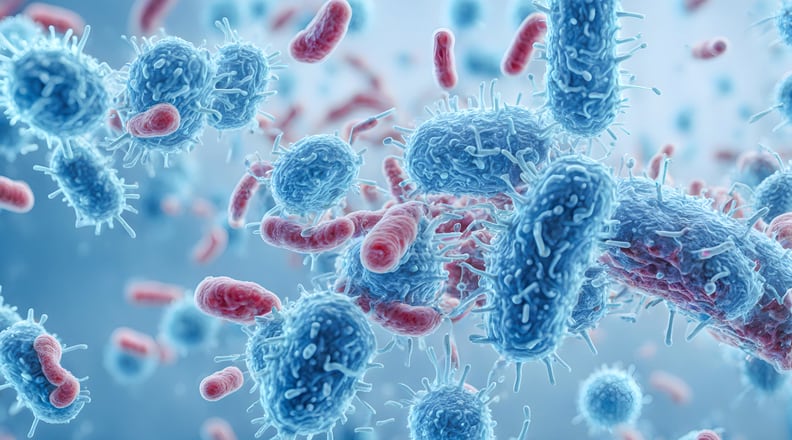According to the 2020-2025 Dietary Guidelines for Americans, most adults should consume between 22 and 34 grams of fiber per day. The exact amount depends on age and gender. However, dietary fiber intake among adults in the United States averages about 15 grams a day.
Writing in the journal Nature Microbiology, researchers from the University of Cambridge highlighted how Faecalibacterium can protect against colonization by a range of disease-causing bugs in the Enterobacteriaceae family, which includes Klebsiella pneumoniae, Shigella, E.coli and others. Faecalibacterium does this by fermenting fiber and producing short-chain fatty acids.
“Therefore, consumption of fiber equals higher short-chain fatty acids in our gut,” senior author Alexandre Almeida of the Department of Veterinary Medicine at University of Cambridge, told NutraIngredients.
“Although we did not test any specific mechanisms on how these fatty acids could be inhibiting Enterobacteriaceae directly, they have been described as being responsible for reducing inflammation in the gut, protecting the gut epithelial barrier and even directly inhibiting the growth of species such as E.coli in laboratory experiments. All of these mechanisms could be the reason why they are associated with individuals that do not have Enterobacteriacea in their gut.”
Study details
Dr. Almeida and his co-workers leveraged a large-scale dataset of public human gut metagenomes spanning 45 countries and used computational and machine learning to analyze over 12,000 stool samples compiled from the European Nucleotide Archive (ENA).
Using DNA sequencing technologies, the team identified and quantified the microbes detected in each sample. They found that the gut microbiome composition of people with Enterobacteriaceae was noticeably different from those without that bacteria in their guts.
The researchers broke the microbes into two groups: “Co-colonizers”—those that thrive alongside Enterobacteriaceae and “co-excluders”—those that were rarely found together.
Overall, 172 gut microbial species were labeled co-colonizers and 135 were named co-excluders, revealing a genus-wide signal of colonization resistance within Faecalibacterium and strain-specific co-colonization patterns of the “underexplored” Faecalimonas phoceensis.
The study noted that Faecalibacterium was one of the co-excluders that stood out because it breaks down a range of fibers to produce short-chain fatty acids. As a result, this inhibits the growth of pathogenic bacteria like Enterobacteriaceae.
Findings suggested that species from the Faecalibacterium genus beyond the well-established F. prausnitzii may play an important part in colonization resistance against Enterobacteriaceae.
The researchers also reported that the strongest protective signal against the risk of infections was displayed by short-chain fatty acids, indicating that fiber consumption may be beneficial in that regard.
Fiber > antibiotics and probiotics?
Almeida explained that the findings suggest fiber may be more effective than probiotics and could lead to new ways to prevent and treat infections without the use of antibiotics.
“For example, instead of killing harmful bacteria directly (which can also harm good bacteria), we could boost the co-excluders or create diets that support their growth,” he said.
“This strategy may be more effective than taking probiotics directly, as new bacteria added to the intestinal tract have been previously shown to only live for a limited period in the gut. We could also target specific pathways that harmful bacteria use to survive, making them less of a threat.”
The authors acknowledged they still do not fully understand the mechanisms and contributing variables of the relationships inside the gut. Looking ahead, they plan to implement other technologies like transcriptomics and metabolomics to gain a deeper knowledge of how the gut ecosystem functions. Additionally, they want to focus on designing studies to test whether specific types of diets affect the incidence of potentially harmful bacteria.
Once they have a better understanding of how microbes interact and communicate in the gut, more targeted, non-antibiotic treatments to prevent infections can be developed, they said.
Source: Nature Microbiology, 2025, 10, 541–553. doi: 10.1038/s41564-024-01912-6. “Ecological dynamics of Enterobacteriaceae in the human gut microbiome across global populations”. Authors: Q. Yin, et al.


